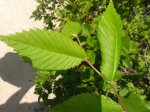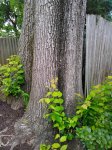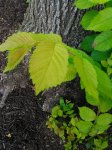GGB
Masterpiece
It's a quick pic of a "weed" in my landlords hedges. She thinks I'm weird already so I snapped fast and left. I hope the leaf is enough to identify. Had a bit of "fuzz" to it. Seems like there's a lot of variations to American elm so I'd like to be certain before I bug her to collect it. Thanks




